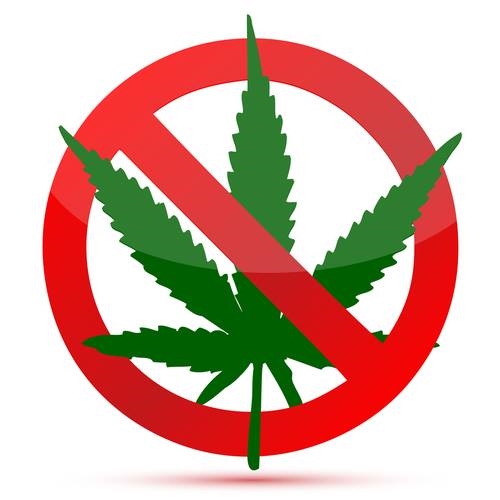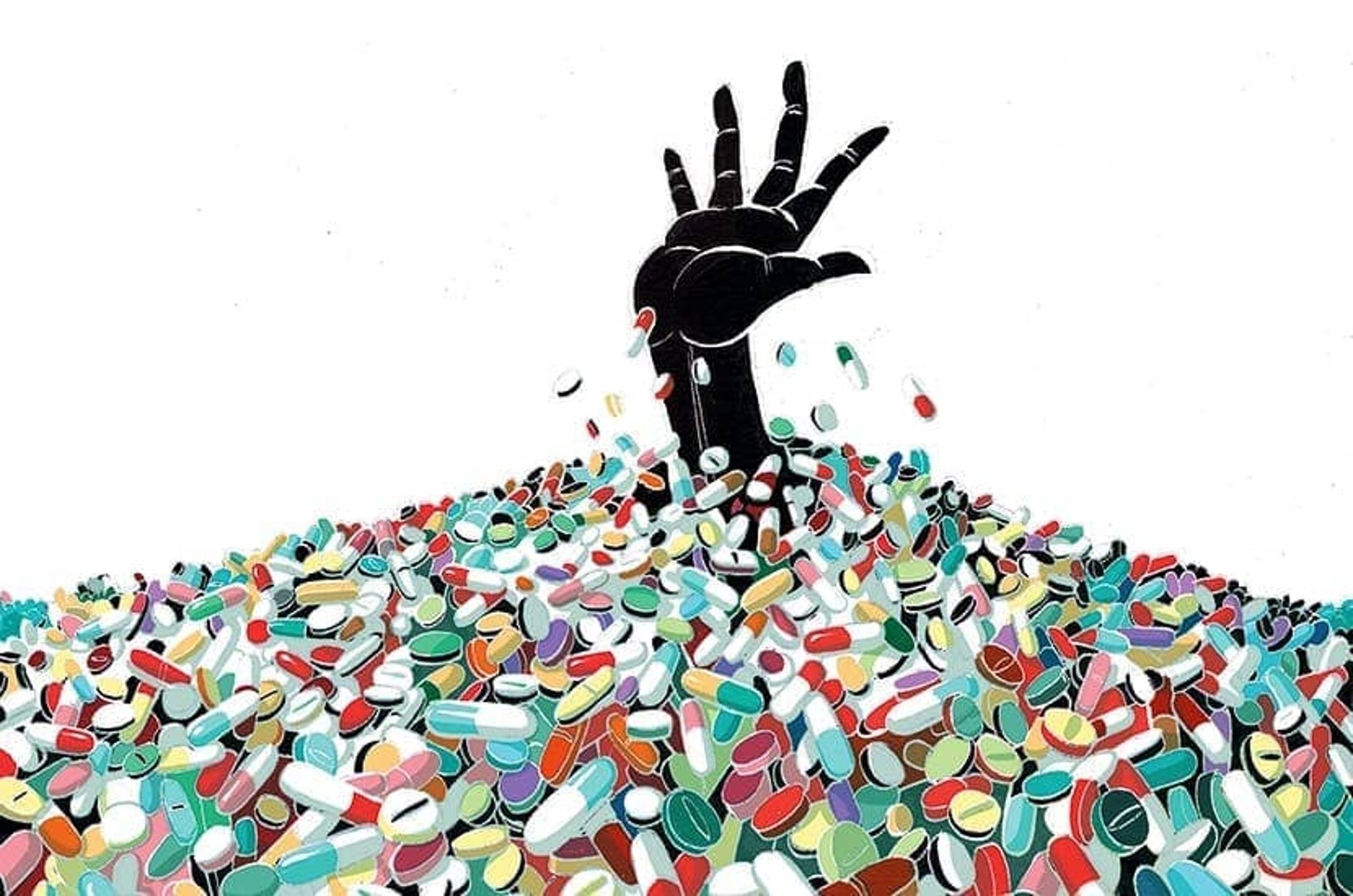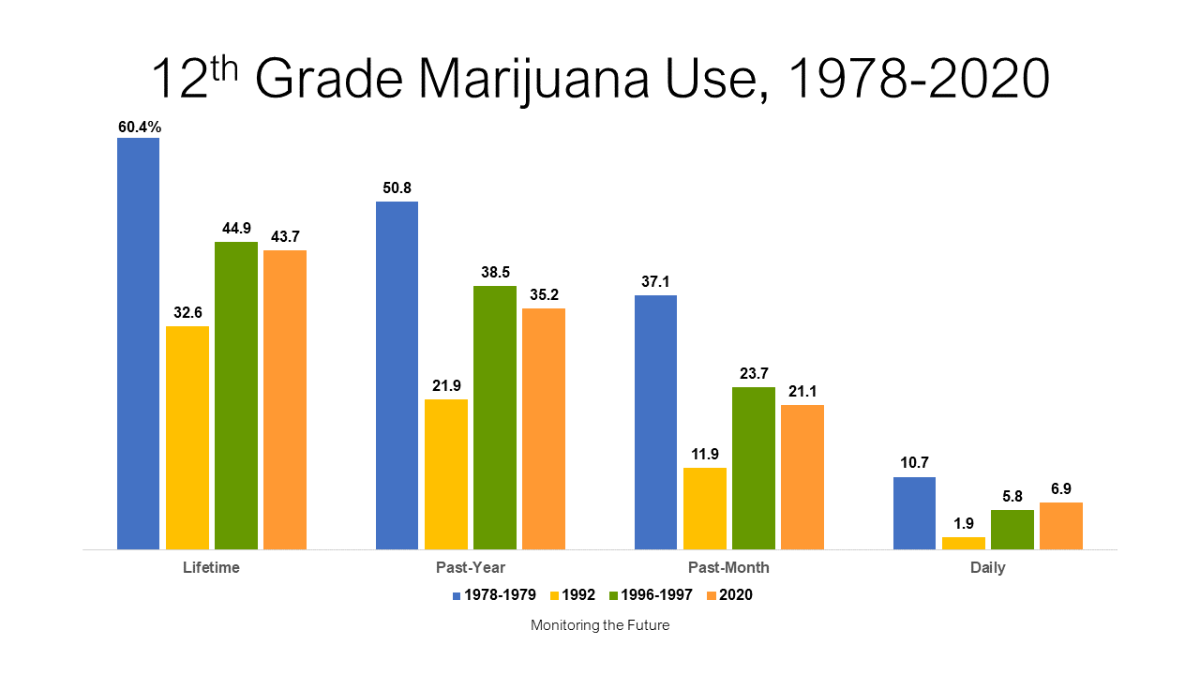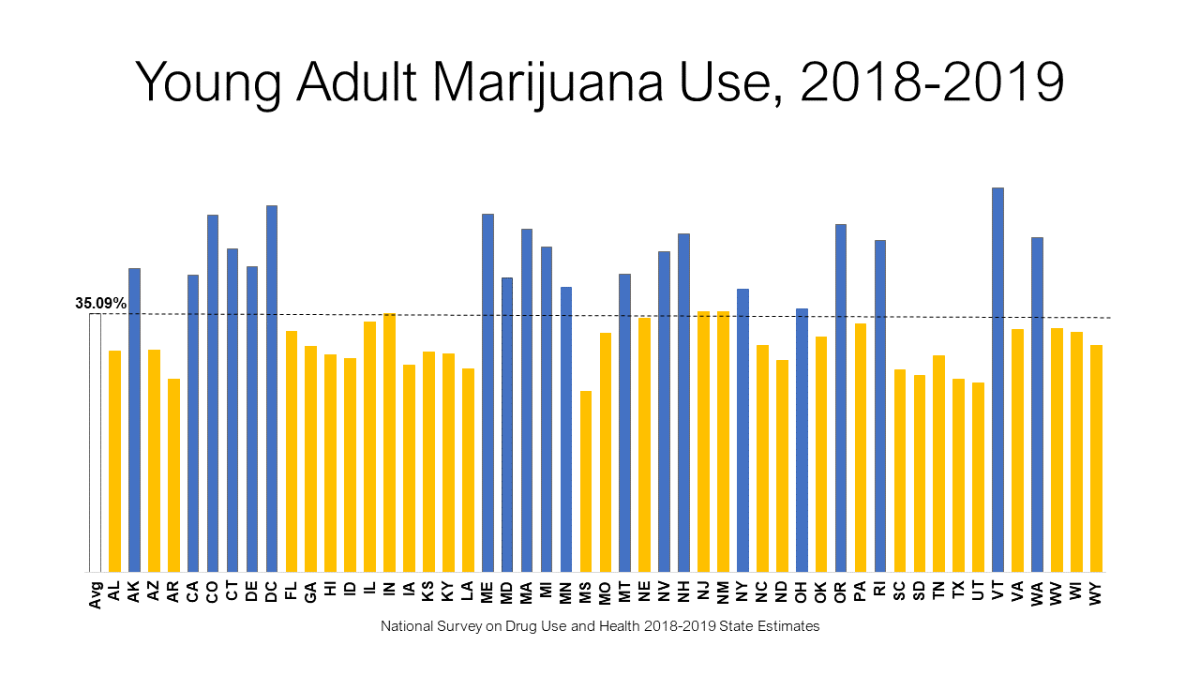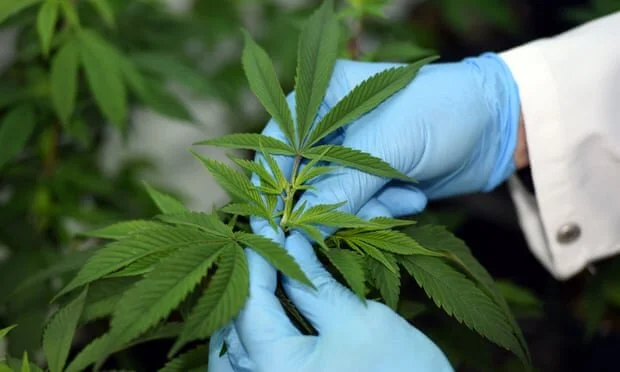Nearly 6 percent of American teens and adults have cannabis use disorder.
Read MoreStay in the know with the latest on our fight against the legalization of marijuana
Have an article that you would like us to post? Share it on our Facebook page!
Going Green: The Physical, Mental, And Emotional Problems Associated With Marijuana→
/Although scientific studies indicate that marijuana is associated with profound mental illnesses, emotional problems, and physical diseases, a shocking number of Americans believe that weed is harmless or helpful — possibly even a natural cure for cancer.
Read MoreLegalizing cannabis fails to address health risks: UN drugs control board→
/Moves by a small number of governments to legalize the non-medical use of cannabis have led to increased consumption without explaining the potentially serious health dangers that users face from the drug, a UN narcotics watchdog said on Thursday.
Read MoreEmphysema more common in marijuana smokers than cigarette smokers
/Emphysema more common in marijuana smokers than cigarette smokers
Read MorePsychosis, Addiction, Chronic Vomiting: As Weed Becomes More Potent, Teens Are Getting Sick→
/With THC levels close to 100 percent, today’s cannabis products are making some teenagers highly dependent and dangerously ill.
Read MoreCannabis and the Violent Crime Surge→
/Heavy marijuana use among youths is leading to more addiction and antisocial behavior.
Read MoreThe link between drugs, terrorism and mental illness→
/Rod Liddle once actually said to me the immortal words ‘You were right and I was wrong’ at a Spectator summer party. This is a moment I shall treasure till the hour of my death. But even so, I was disappointed. For the subject was only Theresa May. I had predicted she would be a terrible premier. Rod had believed she would be good at the job. A year later, it was obvious who was correct. For one brief shining moment I had hoped that Rod had changed his mind about something much more important. I wish he and a lot of conservatives would shift their opinions about the role of mental illness in rampage killing all over the world. And, once they have done that, I wish they would be willing to examine the role of certain illegal and legal drugs in creating such mental illness.
The trouble with such killings, on both sides of the Atlantic, is that so many people have stakes in attributing or denying blame for them. Those who believe that marijuana is harmless dislike it when I draw attention to just how many such killers (about 90 per cent of them, from Lee Rigby’s killers in London to those responsible for carnage in Nice and Sousse) have been using that drug. The ‘steroid community’ is also highly sensitive about suggestions that these chemicals might be associated with serious violence. But the Norway mass-murderer Anders Breivik, the perpetrator of the New Zealand mosque massacre Brenton Tarrant, the Orlando mass killer Omar Mateen and the London Bridge killers in this country were all steroid users. So was the unquestionably unpolitical rampage killer Raoul Moat, who brought terror to Northumbria in 2010 before killing himself. As for antidepressants, anyone who suggests that these medications may be less than perfect, or that they have unintended consequences, faces a howl of fury from those who take them, and the immense power of the companies which make them.
The trouble with mass killings is that so many people have stakes in attributing or denying blame for them
In the USA, gun-control campaigners want to blame such murders solely on lax gun laws, so they can tighten those laws. In Europe, where most nations think they have guns firmly under control, conservatives like to pin the blame on Islamists. And left-wingers, for comparable reasons, like to implicate ‘right wing extremism’ wherever they can, as it is a problem they are anxious to emphasise.
Well, I think the whole point of journalists is to resist the influence of lobbies and factions of this kind. As a former fanatic and follower of the homicidal creed of Bolshevism I did nothing more violent than the occasional rowdy demonstration. I tend to think that you need much more than a fanatical ideology to cross the well-defined frontier beyond which you might be ready to use gun, knife or bomb against soft defenceless flesh. You may point in reply to the chilly, clear-headed murders and torture done by the Provisional IRA. These were very cruel men. But they were wickedly rational and they wanted to live to enjoy the fruits of their victory. They did not cry out slogans as they killed. They were seldom caught. They were extremely good at covering their tracks and avoiding capture. One of their main aims was to secure an amnesty for those of their number who were imprisoned. And how right they were to assume that their atrocities would eventually force the British government to give way.
But the wild killings of which I write are not like that. In last week’s Spectator, Rod, writing about Thomas Mair, killer of Jo Cox MP, declared that ‘nobody suggested Mair was simply mad’. Well, he was wrong about that. I did. Both at the time of Jo Cox’s murder and later, I repeatedly cited evidence that Mair, a man who washed himself with Brillo pads, was significantly unhinged. Though Mair’s trial weirdly did not consider this aspect of his life, there is a good deal of circumstantial evidence that Mair had been mentally unwell and had probably been prescribed mind-altering medication. His crime was utterly irrational. If Mair had a political cause, as Rod and the British liberal establishment both believe, then he did that cause terrible harm by killing a beloved young wife and mother. He would have had to have been very stupid, or irrational, not to have known that. What sort of political motivation impels a person to damage his own cause?
The next thing I have to contend with, in making this case, is the claim that I am somehow trying to exonerate these killers. I have no such aim or desire. It may be that some of them are better being confined for life in secure hospitals than in prisons, but I want them to be locked up as much as anyone else and more than most. In any given year in this country there are random killings of innocent people by total strangers. The number of these ghastly tragedies varies quite widely but is generally at least in double figures. This is a highly sensitive subject and those who raise it can nowadays expect to be accused of stigmatising the mentally ill. Once again, this is not my aim. I long for our country to provide the mentally ill with the residential hospital care so many of them badly need. I just seek a reasoned and effective response to what seems to me to be a new and unexamined danger.
The facts about these events are often quite difficult to establish. Sometimes they emerge long afterwards. For example, coverage of the 2018 massacre at the Marjory Stoneman Douglas High School in Parkland, Florida made almost no mention of cannabis or medication. But it is now clear that the culprit, Nikolas Cruz, was a heavy user of cannabis or why else did he say at his trial last week that the United States would ‘do better if everyone would stop smoking marijuana’? He should know.
I only ask one thing from Rod, and from everybody else. It is that the past drug use of every person convicted of a violent crime should be properly investigated, to see if there is, as I suspect, a meaningful correlation between the two. And we should grasp that crazy people often adopt political causes to dignify themselves, but they are still crazy. Never forget that the supposed Islamist Muhaydin Mire, another heavy marijuana user who went berserk with a knife at Leytonstone Tube station, genuinely and literally believed that Anthony Blair was his guardian angel.
Are state fair officials high? They should not reward super-potent marijuana→
/Cannabis is making its debut at the California State Fair in July, taking its place among chardonnays, craft brews, tomato salsas, pickled peppers and satsuma marmalades as a product of the state’s agricultural bounty.
Read MoreCopycat pot edibles that look like candy are poisoning kids, doctors say→
/Dr. Jane Pegg couldn't believe her eyes when she saw the pot edibles that had poisoned a two-year-old who had been rushed to the emergency room in October.
"It so shocked and appalled me … the package looked almost identical to gummies that are sold as candies in the store," the Nanaimo, B.C., pediatrician said.
Read MorePBS journalistic integrity questioned→
/September 29th 2021, Boston’s Public Broadcasting station WGBH released its NOVA documentary entitled “The Cannabis Question.” A week later it sponsored a panel discussion on the same topic. WGBH asked panel discussion attendees their opinion of the presentations. So this is what I sent to them:
Perhaps you think “The Cannabis Question” is a balanced presentation because it does a reasonable job presenting some of the science of two chemicals in cannabis, THC and CBD. Unfortunately, much of the science goes over the heads of a general public not trained in magnetic resonance imaging, for example. However, the public does relate to personal stories. That’s why you featured seven such stories in the program – all from users claiming benefits of cannabis.
Nowhere were viewers introduced to the victims of THC use, even though some of the risks that create THC victims were identified by your expert interviewees. Risks such as addiction, psychosis, schizophrenia, suicide, cannabis hyperemesis syndrome, and traffic crashes. Of course victims of suicide and traffic fatalities could not be interviewed. But I know for a fact that many victims’ families are not only willing to testify, but have done so.
Your frequent false statements prove the program’s lack of balance. I expected the foolish and inflammatory statements from the Drug Policy Alliance, but I did not expect the narrator’s reference to a “cannabis wellness industry.” That industry is responsible for more deaths and destroyed lives than you admit in your comparison of THC safety with that of other drugs. That does not qualify as a wellness industry.
You never even mentioned driving impairment and the increased potentially thousands of traffic deaths and hundreds of thousands of traffic injuries implicating THC.
If NOVA is interested in presenting the science and victims of THC driving impairment, let me know. If you want to interview the families of other victims, I can put you in touch with a great number of them.
Here are a few of the false, misleading or irresponsible statements in the film:
Narrator 1:25: Federal law blocks science
Nonsense. How do you explain over 35,000 peer-reviewed cannabis manuscripts in the scientific literature, or the scientific work you yourself cited at UCLA, Washington University, UC San Diego, Johns Hopkins and the various hospitals where your interviewees work?
Frederique of the Drug Policy Alliance 34:49: Cannabis is a driving force fueling mass incarceration, targeting poor people and communities of color.
You’re preaching a false narrative. Disparate treatment continues in states that have legalized marijuana as Dr. Cunningham, one of the film’s interviewees pointed out. There are certainly some exceptions, but generally, incarceration is fueled by bad behavior. States like Colorado that have legalized marijuana found that racial differences in arrest rates for drug-related crimes did not disappear after legalization, they actually increased. So don’t sell legalization as a cure for racism. It does not solve the problem.
Dr Cunningham 48:01: Cannabis users show an across the board improvement in a number of different cognitive tasks that require executive function.
Dr Cunningham cautioned that her findings have not been peer-reviewed. And I will tell you that literally thousands of peer-reviewed studies show THC impairs executive function. See the book, “Cannabis in Medicine” published by Springer in 2020, edited by Dr. Ken Finn for some of these references.
Narrator 5:45 Cannabis consists of over 400 compounds, 100 of which are cannabinoids.
That’s irrelevant for smoked marijuana. The pyrolysis of marijuana results in an estimated 2,000 to 3,000 compounds, most of which have never been characterized. You have no idea what you’re sucking into your lungs.
Narrator 42:50: Cannabis is safer than other medications we’ve used for decades.
I presume the narrator is speaking of opioids when he mentions “other medications.” That’s faint praise. A 9mm bullet is half as deadly as a .45 caliber bullet. And a .22 caliber bullet is half as deadly as 9mm bullet. That doesn’t mean we should shoot people with .22 caliber bullets because it’s safe to do so.
Narrator 2:27: A majority of people now live in states where cannabis is legal.
First, it’s still illegal at the federal level, it’s just that federal laws are not enforced. Second, the majority of towns, cities and counties still outlaw licensed marijuana drug dealers in California and Colorado where recreational marijuana is legal. Except in mostly big cities, people don’t want drug dealers in their neighborhood.
Narrator 43:20: About 9% of users will develop a cannabis addiction.
That’s an out-of-date reference, based on low concentration THC products (something you incorrectly term potency), and it refers to adults. For adolescents it’s far higher. In Colorado, 48% of all marijuana users in the last 30 days claim daily or near-daily use.
Narrator 35:20: Over 40,000 are behind bars for cannabis, mainly for possession.
Most possession sentences are the result of a plea bargain down from more serious offenses. I don’t know the number in prison for possession only, but it’s far less than 40,000.
Narrator 24:30: Promoted the use of Epidiolex for Autism.
This may be valid. I hope it is. But promoting it before data are available is as intelligent and responsible as Donald Trump recommending hydroxychloroquine to treat Covid 19.
Frederique 34:59: Cannabis is an essential service.
It’s only been deemed an essential service in states where the politicians are drinking the Kool-Aid, like Polis in Colorado and Newsome in California.
Frederique 50:39: We need to legalize cannabis. We need to pump more money into research to learn more about this substance.
This is the fundamental problem we’re facing. Legalize first, then study the effects. That makes as much sense as Nancy Pelosi’s comment that we need to pass the Obamacare bill to find out what’s in it. States have legalized marijuana before learning of its adverse effects. Now that we know those effects, we are ignoring them because the industry is too powerful, the taxes it generates are too alluring, because politicians are either ignorant, compromised, or spineless, and because a gullible public has been misled by an industry that has little sympathy for the victims it is creating daily. And because the Public Broadcasting Service and other media outlets won’t disclose the full truth.
Narrator 3:45: THC is used to treat PTSD.
You can treat PTSD (or anything else) with Macbeth’s eye of newt if you want to. That doesn’t mean it cures PTSD. THC in low doses only has a positive temporary effect of masking some PTSD symptoms, as pointed out by Dr Vandry, one of your interviewees. Effective long-term treatment requires psychotherapy as well as medications to control symptoms. Promoting self-medication to treat a serious condition like PTSD is irresponsible.
I could go on, but it should be perfectly clear by now that NOVA’s film, “The Cannabis Question” doesn’t qualify as journalism. It’s simply pro-pot propaganda.
Another sad story of loss brought to us by the marijuana industry.
/By Aubree Adams
I absolutely loved living in Colorado.
Family-oriented Pueblo is the state’s best-kept secret. Lake Pueblo, Pueblo Mountain Park, and Devil’s Canyon are perfect places to hike. We lived in an old Craftsman home in the historic district, with a beautiful garden and wonderful neighbors. I felt like I was living in a dream.
And then legalized marijuana came, and everything changed. It’s taken nearly a decade for Colorado’s elected leaders to understand the damage pot is doing to our children. I saw it years ago.
My eldest son entered eighth grade in 2014, the year recreational marijuana stores opened in Colorado. Soon, his behavior changed. He became irrational and repeated things that didn’t make sense. I dismissed it as adolescent mood swings. He’d just broken up with a girlfriend. That’s all it was, I told myself.
By his freshman year, I realized he was using marijuana. I was still in denial, though, until he attacked his younger brother and then tried to kill himself. The hospital treated him and sent him home. A few days later, when it was clear he was still suicidal, I took him back to the emergency room. Don’t worry, they told me. It’s just marijuana.
Marijuana is a serious drug
Eventually, my son told me he was dabbing, which I had never heard of. A dab (or wax or shatter) is a highly concentrated form of THC, marijuana’s active ingredient. It’s heated and smoked, delivering an instant, overwhelming high. Crack weed, my son called it. He knew it was making him crazy. He wanted to quit, but addiction had him firmly in its grip.
And yes, he was addicted. Addiction is a pediatric disease. In 9 out of 10 cases, it originates with drug or alcohol use before age 21. Marijuana, which has been linked to mental illness and psychosis in teens and young adults, slowly takes away your humanity. That’s what it did to my son, who turned to running the streets with homeless people. He had no trouble finding people to feed his addiction in return for selling their legally home-grown marijuana.
I quit working, making it my full-time job to save my son. I soon found out that getting treatment wasn’t easy. Beds were full. Officials minimized marijuana's addictiveness.
I found a highly regarded treatment center in Utah; they required $36,000 up front that I didn't have. Finally, I found a place in San Diego that helped restore his health. He regained confidence and looked good. In the meantime, I had learned about a recovery community in Houston, where host families provide positive peer support. My son got better when he left Colorado, so I moved him there in 2016. My other son, who had developed post-traumatic stress disorder, and I followed in 2018.
Rein in this monster
Sadly, my story isn’t unique. Families across Colorado have experienced the same heartbreak and worse. More and more, marijuana is implicated in teen suicides. From 2014 to 2018, marijuana was present in nearly one-third of teen suicides. Pot is taking our children from us.
That’s why a bipartisan legislature this year passed a bill that begins to rein in this monster. The bill:
► Authorizes a study on the effects of high-potency THC products on the developing brain and how to keep those products away from teens. These unbiased experts will make a recommendation for next steps to the legislature.
► Requires doctors issuing medical marijuana recommendations to consider the person's mental health history;
► Orders a report on hospital discharge data when marijuana use is likely;
► Directs coroners to screen for THC in non-natural deaths;
► Reduces the amount an 18-year-old medical card user can purchase in a single day. This closes a loophole that could be exploited to stock up on marijuana concentrates, which they sell to their younger friends.
It’s a baby step, but it’s significant that the state that pioneered marijuana legalization is finally recognizing there are harmful consequences.
We can’t keep going down this road. We can’t keep sacrificing our children on the altar of pot. Big Marijuana promotes high-potency, addictive concentrates with no proof they are safe for anyone. Colorado’s commission, when it reviews all the research already done, will confirm that this product is dangerous to children and much too easy for them to get.
Maybe lives will be saved. Maybe other states will be warned against following Colorado’s lead Maybe no more families will have to endure the hell that mine has.
But it comes too late for me and my oldest son. He started using again. I haven’t seen him in a year.
Aubree Adams is director of Every Brain Matters. She is the parent coordinator for a Houston recovery community, where she lives with her youngest son and two dogs.
Are scientists missing the forest for the trees on youth marijuana use?→
/Are scientists missing the forest for the trees?
Last week, the Journal of the American Medical Association published a study by DM Anderson and colleagues, scientists from universities in Montana, Spain, and San Diego, California. The study finds that legalization does not increase adolescent marijuana use. The researchers analyzed the Youth Risk Behavior Surveillance System (YRBSS) which the Centers for Disease Control and Prevention (CDC) began conducting in 1991.
Youth Risk Behavior Surveillance System (YRBSS)
YRBSS collects data from high school students every two years about behaviors that contribute to unintentional injuries and violence, sexual behaviors related to unintended pregnancy and sexually transmitted infections, alcohol and other drug use, tobacco use, unhealthy dietary behaviors, and inadequate physical activity. Not all states participate in YRBSS, and those that do participate periodically, although in the 2019 YRBSS all but five states did so. Minnesota, Oregon, and Washington State have never participated in YRBSS. The survey asks three questions about marijuana: ever use, current use, and what age students were when they started using marijuana. It began asking about vapor product use in 2015, but never asks what students are vaping.
So far as these limited data are concerned, the researchers’ findings seem true. But two other national surveys show us something more.
The National Survey on Drug Abuse/National Survey on Drug Use and Health
The National Survey on Drug Abuse is the oldest. It began in 1971 and was financed by the National Institute on Drug Abuse (NIDA). Its first two surveys were done under the auspices of the National Commission on Marihuana and Drug Abuse. It began publishing annual data in 1976 and was transferred to the newly created Substance Abuse and Mental Health Services Administration (SAMHSA) in 1992. Technological innovations enabled the survey to be redesigned in 1999 and its name was changed to the National Survey on Drug Use and Health (NSDUH) in 2002. However, the redesign of the renamed survey resulted in an inability to compare its results with findings from the National Household Survey on Drug Abuse.
The NSDUH collects data annually on the use of alcohol, tobacco, marijuana, and other drugs from adolescents (ages 12-17), young adults (ages 18-25), and older adults (ages 26 and older). It combines two years of data to report drug use among these age groups by state but unfortunately not before 2002. RTI is the contractor responsible for administering this survey, which also collect data on the mental health of Americans.
Monitoring the Future (MTF)
The third national survey is Monitoring the Future (MTF), which began in 1975. Financed by NIDA, MTF is the only survey that can give us continuous data from 1976 through today. It collects data about the lifetime, past-year, past-month, and daily use of alcohol, tobacco, marijuana, and other drug by students in grade 12. It added students in grades 8 and 10 in 1990. In 2015, MTF began asking about vaping and two years later asked specifically what kids were vaping – nicotine, marijuana, or just flavoring. Unfortunately, it does not report its data by state. The University of Michigan Institute for Social Research administers this survey.
The chart above shows that drug use among high school seniors peaked in 1978-1979. A 1977 study called Highlights from the National Survey on Drug Abuse estimates that in 1962, less than 2 percent of the US population and less than 1 percent of adolescents had ever tried an illicit drug. Over the next 16 years, “ever-tried” use rose among seniors to 60.4 percent, while 50.8 percent of seniors used the drug in the past year, 37.1 percent used it in the past month, and 10.7 percent used it daily. What drove that astonishing escalation in use among 18-year-olds?
Decriminalization and Drug Paraphernalia
The National Organization for the Reform of Marijuana Laws (NORML) formed in the early 70s and initiated a movement to decriminalize marijuana. Decriminalization then was defined as reducing criminal penalties for possessing an ounce or less of marijuana, enough for personal use. In 1973, NORML persuaded Oregon to decriminalize marijuana and in rapid succession over the next five years,10 more states decriminalized. By 1978, eleven states had reduced marijuana penalties to that of a traffic ticket. Along with decriminalization emerged the drug paraphernalia industry called by some “little learning centers for young drug abusers.” Head shops (shops for “heads” as the industry called drug users) selling child-appealing toys and gadgets to enhance drug use opened in urban and suburban communities across the US throughout the 70s, leaving no doubt in parents’ minds that a drug paraphernalia industry was coming after their kids. Studies showed that children reasoned a government would not reduce penalties for a drug that could hurt them.
The Parent Movement
This gave rise to a national Parent Movement which began in Atlanta in 1976 and spread across the nation. The movement was based on three goals: join with other parents to protect kids from becoming drug users, shut down headshops, and stop decriminalization. Some 3,000 parent groups from the mid-70s to the early 90s formed parent peer groups to protect their children and their children’s friends from using drugs. Many, usually in state capitals, became politically active. Their efforts to persuade legislators to pass laws outlawing drug paraphernalia drove the industry out of business. No more states decriminalized marijuana over the next several decades. NORML’s funding nosedived forcing the organization to severely curtail its decriminalization crusade.
Between 1978-79 and 1992, high school seniors’ marijuana use plummeted:
Lifetime use was cut nearly in half from 60.4 percent to 32.6 percent.
Past-year use dropped by more than half from 50.8 percent to 21.9 percent.
There was a three-fold decrease in past-month use, and a
five-fold decrease in daily marijuana use.
The first two directors of the National Institute on Drug Abuse, Robert DuPont, MD, and William Pollin, MD, credit the Parent Movement with bringing about this significant reduction in marijuana use among adolescents. But in just four years, these gains reversed:
Seniors’ lifetime marijuana use rose from 32.6 percent in 1992 to 44.8 percent in 1996-1997.
Their past-year use nearly doubled over those four years, from 21.9 percent to 38.5 percent.
Past-month use among seniors did double, and
Daily use rose more than three-fold.
What made that happen?
Medical Marijuana
In 1992, three billionaires began pumping money into a by-then moribund NORML as well as into two new groups, the Marijuana Policy Project, and a coalition of other groups that became the Drug Policy Foundation. They targeted states that allow ballot initiatives, made unsubstantiated claims about the healing powers of marijuana, bought voters’ signatures, and placed measures to legalize marijuana as medicine on the ballots of states few lived in, leaving taxpayers to pay for the consequences of their actions. A steady stream of media stories across the nation educated children that pot is medicine and they responded in kind. If a government wouldn’t reduce penalties for a drug that could hurt you, that drug surely couldn’t hurt you if it was medicine! The national cacophony that led up to the first state legalizing pot as medicine – California in November 1996 – carried that message and kids heard it loud and clear.
The National Household Survey on Drug Abuse shows much of these same patterns for both adolescents and young adults during the 70s, 80s, and 90s. But since that survey’s data cannot be compared to NSDUH’s, the best we can do is look at the most recent survey, which is the 2018-2019 state estimates. The following two charts are created on the same vertical axis of 0 percent to 60 percent. The first one shows past-year marijuana use among adolescents, the second among young adults.
No, not all of the blue bars are recreational states and yes, some of the yellow bars are. But 36 of these states have legalized marijuana for medical use and that has influenced young people ages 12 to 25 to engage in its use. Like decriminalization in the 70s, the novelty of turning pot into medicine with an intensive four-year campaign championed by national media has not only had a profound effect on the nation’s young people but also introduced a unique way to approve medicines by ballot-iinitiative and, later, legislative fiat rather than through the Food and Drug Administration. Should we worry that advocates are now applying that pattern to other drugs?
Access these graphics here.
Access YRBSS here.
Access NSDUH here.
Access MTF here.
Read National Survey on Drug Use and Health: Summary of Methodological Studies, 1971-2014 [Internet] here.
Medical cannabis unlikely to benefit most chronic pain patients, international researchers say→
/“So medical cannabis is not likely to be a panacea. It is not likely to work for the majority of individuals who live with chronic pain. We do have evidence that it does appear to provide important benefits for a minority of individuals,” said Busse, who is also a chiropractic doctor.
Read MoreDoes marijuana legalization work? The answer is a resounding No.→
/In a powerful review of how Colorado is doing since legalizing marijuana for medical use in 2009 and for recreational use in 2014, David Murray of the Hudson Institute suggests the answer is a resounding “No.”
Read MoreProgress against Big Marijuana and its lobby in Colorado→
/The legislation is a stride. A small stride but a hopeful one. Granted, the fact that it got whittled down is a testament to the clout Big Marijuana wields over ruling legislative Democrats. But the fact that the pending legislation was introduced at all — and would impose a bit more responsibility on marijuana sales — suggests the Democrats are starting to get it.
Read MoreAre Marijuana Use and Suicide Linked? — A review of the data show there's cause for alarm→
/Data linking marijuana use to people with suicidal ideation, attempts, and completed suicides are steadily increasing.
Read MoreA founding father of legal pot reveals regrets→
/I wish I could be proud of what we created, but I’m not. The outcome of 64 is shameful, hurts people, and Colorado is not “safer.”
Read MoreCannabis and chronic pain: does the case for medicinal use stack up?→
/Two expert groups have recently recommended against medicinal cannabis for people suffering persistent non-cancer pain
Read MoreMedical Marijuana Is Not Regulated as Most Medicines Are→
/The industry lacks randomized controlled clinical trials that can clearly establish benefits and risks.
Read More